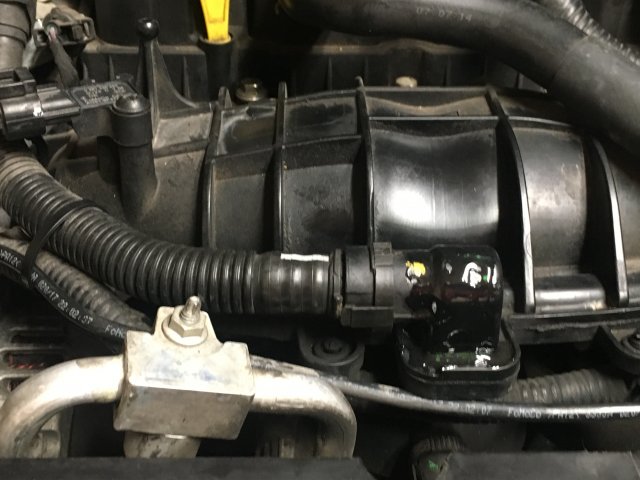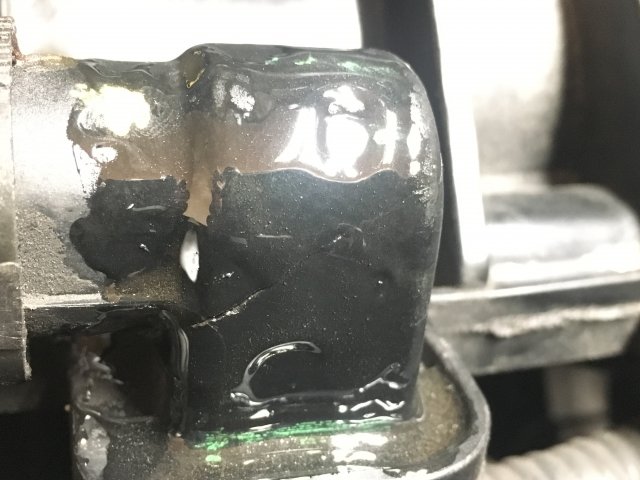Also, since metal is a much better conductor of heat, it sheds that heat to the air more efficiently (not what we want in this case). And just taking a guess here, but the material on a metal manifold would most likely be thicker therefore more material to hold more heat.
-
Sign Up! To view all forums and unlock additional cool features
Welcome to the #1 Fiesta ST Forum and Fiesta ST community dedicated to Fiesta ST owners and enthusiasts. Register for an account, it's free and it's easy, so don't hesitate to join the Fiesta ST Forum today!
Upgraded Intake Manifold
- Thread starter xxiaze
- Start date
Specific heat capacity of any material = its thermal effusivity /(density*square root of (its thermal diffusivity)). That means specific heat capacity and density are always inversely proportional. This is why, as density increases, the specific heat capacity decreases and vice versa.
If you were to take a part made from steel and compare it to the same part made from thermoplastic, the plastic part could be more than 6 times lighter.
Take that same part, now manufactured with aluminum, and the plastic version would be approximately half the weight.
Strength-to-Weight Ratio
In the past, one of the biggest roadblocks to replacing metal parts with plastic was that plastic, while much lighter, could not compete with the strength characteristics of metal. Now, with advances in plastic composites and the addition of carbon fiber or other glass fibers to plastic material formulations, thermoplastic products can perform as well as and in some cases even outperform metal in ratios such as strength-to-weight and strength-to-stiffness.
Strength-to-Weight Ratio, also known as Specific Strength, is a material’s strength (force per unit area at failure) divided by its density.
If you were to take a part made from steel and compare it to the same part made from thermoplastic, the plastic part could be more than 6 times lighter.
Take that same part, now manufactured with aluminum, and the plastic version would be approximately half the weight.
Strength-to-Weight Ratio
In the past, one of the biggest roadblocks to replacing metal parts with plastic was that plastic, while much lighter, could not compete with the strength characteristics of metal. Now, with advances in plastic composites and the addition of carbon fiber or other glass fibers to plastic material formulations, thermoplastic products can perform as well as and in some cases even outperform metal in ratios such as strength-to-weight and strength-to-stiffness.
Strength-to-Weight Ratio, also known as Specific Strength, is a material’s strength (force per unit area at failure) divided by its density.
Also , can you provide a link for the $60 intake manifold ? The cheapest I've paid was $75 + tax at my local Ford dealer with my discount .
For only $60 I can stock up on some as I work on quite a few of these vehicles . Thank you
For only $60 I can stock up on some as I work on quite a few of these vehicles . Thank you
https://www.tascaparts.com/oem-part...maWVzdGEmeT0yMDE2JnQ9c3QmZT0xLTZsLWw0LWdhcw==
Price must have increased (like everything else) lol. $77 from my source.
https://www.tascaparts.com/oem-parts/ford-intake-manifold-bm5z9424a?c=Zz1lbmdpbmUmcz1lbmdpbmUtcGFydHMmbD0xOSZuPUFzc2VtYmxpZXMgUGFnZSZhPWZvcmQmbz1maWVzdGEmeT0yMDE2JnQ9c3QmZT0xLTZsLWw0LWdhcw==
https://www.tascaparts.com/oem-parts/ford-intake-manifold-bm5z9424a?c=Zz1lbmdpbmUmcz1lbmdpbmUtcGFydHMmbD0xOSZuPUFzc2VtYmxpZXMgUGFnZSZhPWZvcmQmbz1maWVzdGEmeT0yMDE2JnQ9c3QmZT0xLTZsLWw0LWdhcw==
Similar threads
-
Upgraded engine mounts yay or nay and also springs versus coilovers?
- Started by Karl038
- Replies: 9
-
-
-
Replace upgraded bubble style coolant tank
- Started by khill3000
- Replies: 1
-
-
FS S280 turbo, Bosch Uprated Injectors, Xtreme-DI (XDI) Upgraded High Pressure Fuel Pump
- Started by nanay12
- Replies: 14
-
Recalled Coolant reservoir, anyone upgraded to a steel reservoir?
- Started by Ludeem1
- Replies: 16
-
-
-



![Wink [wink] [wink]](/images/smilies/wink.gif)